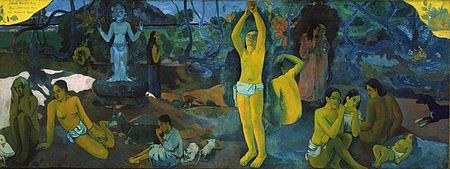Earnest Sevier Cox
| |||||||||||||||
Read other articles:

Si ce bandeau n'est plus pertinent, retirez-le. Cliquez ici pour en savoir plus. Cet article ne cite pas suffisamment ses sources (mai 2017). Si vous disposez d'ouvrages ou d'articles de référence ou si vous connaissez des sites web de qualité traitant du thème abordé ici, merci de compléter l'article en donnant les références utiles à sa vérifiabilité et en les liant à la section « Notes et références ». En pratique : Quelles sources sont attendues ? Comment …
2020年夏季奥林匹克运动会波兰代表團波兰国旗IOC編碼POLNOC波蘭奧林匹克委員會網站olimpijski.pl(英文)(波兰文)2020年夏季奥林匹克运动会(東京)2021年7月23日至8月8日(受2019冠状病毒病疫情影响推迟,但仍保留原定名称)運動員206參賽項目24个大项旗手开幕式:帕维尔·科热尼奥夫斯基(游泳)和马娅·沃什乔夫斯卡(自行车)[1]闭幕式:卡罗利娜·纳亚(皮划艇)[2…

19th-century phonetic writing system devised by the LDS Church Mormon script redirects here. For alleged script of portions of the Book of Mormon, see Reformed Egyptian. This article contains Deseret alphabet characters. Without proper rendering support, you may see question marks, boxes, or other symbols instead of Deseret letters. Deseret alphabet𐐔𐐯𐑅𐐨𐑉𐐯𐐻Script type Alphabet CreatorGeorge D. Watt, under the direction of the Board of Regents, led by Brigham YoungPublishe…

British artist and cartoonist (1898–1973) This article has multiple issues. Please help improve it or discuss these issues on the talk page. (Learn how and when to remove these template messages) This article needs additional citations for verification. Please help improve this article by adding citations to reliable sources. Unsourced material may be challenged and removed.Find sources: Philip Mendoza – news · newspapers · books · scholar · JSTOR (Octo…

Liga 3 2017 PapuaMusim2017JuaraPersido Dogiyai[1]← 2014 2018 → Liga 3 2017 Papua (juga dikenal sebagai Piala Gubernur Papua 2017) adalah edisi ketiga dari Liga 3 di wilayah Provinsi Papua sebagai babak kualifikasi untuk putaran nasional dari Liga 3 2017. Persintan Intan Jaya adalah juara bertahan. Kompetisi dijadwalkan untuk dibuka pada tanggal 24 Mei 2017.[2] Tim Ada 19 tim yang akan berpartisipasi di liga pada musim ini. Grup A Persidafon Dafonsoro Emsyk FC Persiyali Yalimo…

Review of the election For related races, see 1946 United States gubernatorial elections. 1946 Arizona gubernatorial election ← 1944 November 5, 1946 1948 → Nominee Sidney Preston Osborn Bruce Brockett Party Democratic Republican Popular vote 73,595 48,867 Percentage 60.10% 39.90% Election results by countyOsborn: 50–60% 60–70% 70–80% Governor before election Sidney P…

Частина серії проФілософіяLeft to right: Plato, Kant, Nietzsche, Buddha, Confucius, AverroesПлатонКантНіцшеБуддаКонфуційАверроес Філософи Епістемологи Естетики Етики Логіки Метафізики Соціально-політичні філософи Традиції Аналітична Арістотелівська Африканська Близькосхідна іранська Буддійсь…

American musician (1938–2020) Julie FelixFelix performing for Dutch television in 1967Background informationBorn(1938-06-14)June 14, 1938Santa Barbara, California, U.S.DiedMarch 22, 2020(2020-03-22) (aged 81)GenresFolk music, folk rockOccupation(s)Singer, guitarist, songwriterInstrument(s)Vocals, guitarYears active1963–2020LabelsDecca, Fontana, RAK, EMI, Remarkable (own label)Musical artist Julie Ann Felix (June 14, 1938 – March 22, 2020)[1] was an American-British folk singer…

American politician Smith S. TurnerMember of the U.S. House of Representativesfrom Virginia's 7th districtIn officeJanuary 30, 1894 – March 3, 1897Preceded byCharles T. O'FerrallSucceeded byJames HayMember of the Virginia House of Delegates from Warren CountyIn office1869–1871Preceded byDistrict createdSucceeded bySamuel W. Thomas Personal detailsBornNovember 21, 1842Warren County, VirginiaDiedApril 8, 1898(1898-04-08) (aged 55)Front Royal, VirginiaPolitical partyDemocra…

Scientific research organization for the US Air Force and US Space Force AFCRC redirects here. On Wikipedia, AFCRC may refer to Wikipedia:Articles for creation/Redirects and categories. This article contains content that is written like an advertisement. Please help improve it by removing promotional content and inappropriate external links, and by adding encyclopedic content written from a neutral point of view. (June 2018) (Learn how and when to remove this message) Air Force Research Laborato…

Canadian Mohawk actor and athlete (1912–1980) Jay SilverheelsSilverheels at The Meadows Racetrack in Pennsylvania, 1970sBornHarold Jay SmithMay 26, 1912Six Nations of the Grand River, Ontario, CanadaDiedMarch 5, 1980 (aged 67)Calabasas, California, USNationalityMohawk / CanadianOccupation(s)Actor, stunt man, athlete, poet, salesmanYears active1937–1980Known forTontoTelevisionTonto in The Lone Ranger (TV series)Spouses Bobbi Smith (m. 19??; div. 1943) Mary Diroma (m.…

Federico Guillermo II de Hesse-Kassel Landgrave de Hesse Federico de Hesse-Kassel.Información personalNacimiento 26 de noviembre de 1820Copenhague, Dinamarca DinamarcaFallecimiento 14 de octubre de 1884 (63 años)Fráncfort, Imperio alemánSepultura Mausoleo del Castillo de Rumpenheim, Offenbach am MainFamiliaDinastía Hesse-KasselPadre Guillermo de Hesse-KasselMadre Luisa Carlota de DinamarcaCónyuge Alejandra Nikoláyevna de RusiaAna de PrusiaHijos Príncipe GuillermoPríncipe Fede…

العلاقات الغينية اللبنانية غينيا لبنان غينيا لبنان تعديل مصدري - تعديل العلاقات الغينية اللبنانية هي العلاقات الثنائية التي تجمع بين غينيا ولبنان.[1][2][3][4][5] مقارنة بين البلدين هذه مقارنة عامة ومرجعية للدولتين: وجه المقارنة غينيا لبنان �…

Spanish footballer In this Spanish name, the first or paternal surname is Ontiveros and the second or maternal family name is Parra. Javi Ontiveros Ontiveros with Spain U18 in 2015Personal informationFull name Javier Ontiveros Parra[1]Date of birth (1997-09-09) 9 September 1997 (age 26)[1]Place of birth Marbella, SpainHeight 1.70 m (5 ft 7 in)[1]Position(s) WingerTeam informationCurrent team CádizYouth career2000–2008 Vázquez Cultural2008�…

Malaysian badminton player (born 1968) In this Chinese name, the family name is Cheah (谢). Badminton playerCheah Soon Kit谢勋寁Personal informationCountryMalaysiaBorn (1968-01-09) 9 January 1968 (age 56)Ipoh, Perak, MalaysiaHeight1.80 m (5 ft 11 in)Weight73 kg (161 lb)Years active1986–2000HandednessRightMen's doublesHighest ranking1 (1992) Medal record Men's badminton Representing Malaysia Olympic Games 1996 Atlanta Men's doubles World Championship…

1935 film This article needs additional citations for verification. Please help improve this article by adding citations to reliable sources. Unsourced material may be challenged and removed.Find sources: Rainbow Valley film – news · newspapers · books · scholar · JSTOR (June 2019) (Learn how and when to remove this message) Rainbow ValleyFilm posterDirected byRobert N. BradburyWritten byLindsley ParsonsProduced byPaul MalvernStarring John Wayne Geor…

Ceratizit Challenge by La Vuelta 2022 GénéralitésCourse8e La Vuelta FemeninaCompétitionUCI World Tour féminin 2022 2.WWTÉtapes5Dates7 – 11 septembre 2022Distance478,3 kmPays EspagneLieu de départMarina de CudeyoLieu d'arrivéeMadridÉquipes22Partantes131Arrivantes106Vitesse moyenne38,69 km/hSite officielSite officielRésultatsVainqueur Annemiek van Vleuten (Movistar Team)Deuxième Elisa Longo Borghini (Trek-Segafredo)Troisième Demi Vollering (SD Worx)Classement par points Silvia Persic…

Group of miracles in Catholicism St. Elizabeth of Hungary: Miracle of the roses by Karl von Blaas, 1839. Within Catholicism, a miracle of the roses is a miracle in which roses manifest an activity of God or a saint.[1] Such a miracle is presented in various hagiographies and legends in different forms,[2] and it occurs in connection with diverse individuals such as Saints Elizabeth of Hungary (1207–1231), Elizabeth of Portugal (1271–1336), Saint Dorothy, a 4th-century virgin …

ζ Arietis Data pengamatan Epos J2000.0 Ekuinoks J2000.0 Rasi bintang Aries Asensio rekta 03h 14m 54.1s Deklinasi +21° 02' 40 Magnitudo tampak (V) +4.87Jarak340 ± 38 ly(104 ± 12 pc)Tipe SpektralA1V Penamaan lain 58 Arietis, HR 972,HD 20150, BD+20°527,FK5 1089, HIP 15110,SAO 75810, GC 3872 Referensi basis dataSIMBADdata Zeta Arietis (ζ Ari / ζ Arietis) adalah salah satu bintang yang berada di rasi Arie…

Bay in Antartica Flandres BayIcebergs and a humpback whale in Flandres BayFlandres BayLocation in AntarcticaLocationDanco Coast, Graham Land, Antarctic PeninsulaCoordinates65°2′S 63°20′W / 65.033°S 63.333°W / -65.033; -63.333 (Flandres Bay) Flandres Bay (65°2′S 63°20′W / 65.033°S 63.333°W / -65.033; -63.333 (Flandres Bay)) is a large bay lying between Cape Renard and Cape Willems, along the west coast of Graham Land,…

